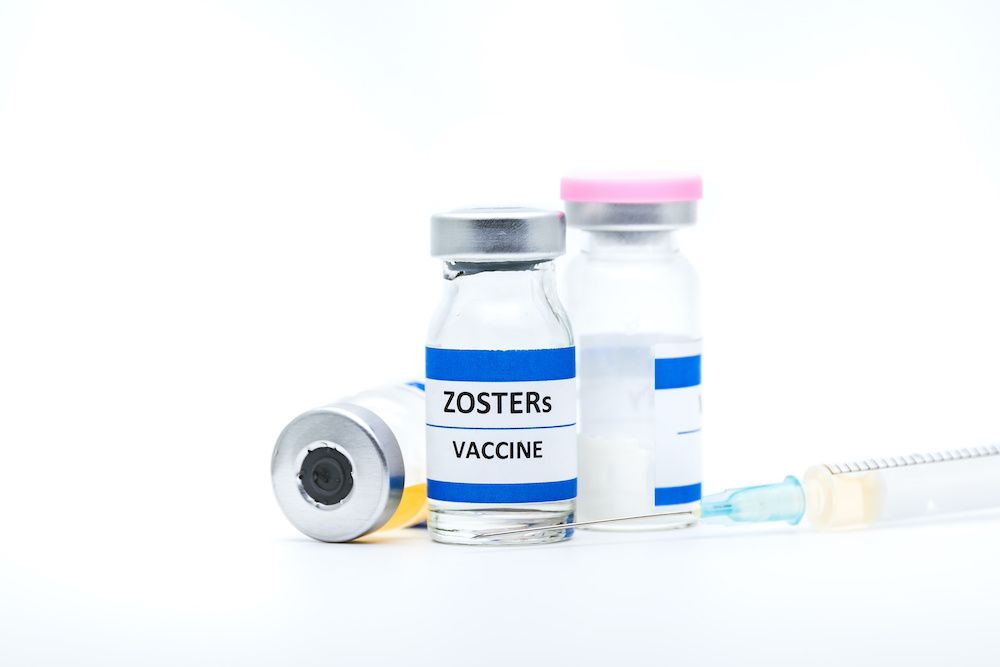Shingles Vaccine Protects More Than Just the Recipient
Herpes zoster exposure puts unvaccinated individuals at risk for chickenpox.

Most of the advice received by eligible recipients of the recombinant herpes zoster (HZ) vaccine (Shingrix) is focused on protecting oneself from shingles and its complications. But there is another consideration that should be discussed: protecting vulnerable family members and friends from a potential case of chickenpox.
Both chickenpox (varicella) and shingles, or HZ, are caused by the varicella zoster virus (VZV). Highly contagious chickenpox spreads to individuals who have never had the disease or been vaccinated against it through close contact with an infected person. Once chickenpox has run its course, VZV remains in the body as a latent infection until it reemerges as shingles decades later.
Although shingles itself is not contagious, the virus is. This creates a situation in which a patient with active shingles can pass along VZV to a person who has no immunity to it, resulting in a case of chickenpox.
Today, there are 2 effective chickenpox vaccines licensed for use in the United States, varicella virus vaccine live (Varivax) and measles, mumps, rubella and varicella virus vaccine live (ProQuad). The CDC estimates that vaccination prevents more than 3.5 million cases of chickenpox, 9000 hospitalizations, and 100 deaths in the US annually.1
However, millions of children, adolescents, and adults who have never had chickenpox or been vaccinated are at risk. Young children who have received only the first of 2 doses of vaccine recommended by the CDC are also susceptible.
A recent article in The New York Times illustrates the problem. The author, a mother in her mid-30s, developed the shingles rash on her neck. Her young, partially vaccinated son touched the rash, putting him at risk for developing chickenpox. As she researched the subject, she formulated several valid questions.2
“Chickenpox and shingles vaccines are both highly effective, so why is the latter only available to older adults?” Sarah Szczypinski wrote in the article. “How many young adults get shingles in the first place, and does the FDA age recommendation for the Shingrix vaccine prevent them from getting it? And most importantly, do parents realize that unvaccinated kids—either because they are too young or by parental choice—might be at risk for chickenpox if they’re exposed to a shingles rash?”2
Adding to the conundrum is a recent study revealing that shingles is on the rise among individuals like Szczypinski who are ineligible for the vaccine due to their age. This prompted the researchers to caution that a revision of age recommendations for vaccination should be made to include individuals younger than 50 years of age.
The good news is that the shingles vaccination rate in the US has risen 5-fold in the past decade and has been holding steady since 2018. In fact, the current rate of 35% is 5 points higher than the CDC’s Healthy People 2020 target for shingles vaccination. This means that more people than ever are protected against the disease and are not passing the virus along to vulnerable individuals.
Another positive is that Shingrix, the vaccine approved for use in the US by the FDA in 2017 for people 50 years and older, is up to 90% effective at preventing shingles. Fewer cases of shingles means fewer potential infections that could lead to cases of chickenpox in at-risk children and adults.
References
1. Chickenpox Vaccination: What Everyone Should Know. CDC. Last updated August 7, 2019. Accessed December 2, 2020. https://www.cdc.gov/vaccines/vpd/varicella/public/index.html#:~:text=CDC%20recommends%20two%20doses%20of,age%204%20through%206%20years.
2. Szczypinski S. Rising Shingles Cases in Adults Put Unvaccinated Children at Risk. The New York Times. Published September 3, 2020. Last Updated September 7, 2020. Accessed December 2, 2020. https://www.nytimes.com/2020/09/03/parenting/chickenpox-shingles-vaccine.html